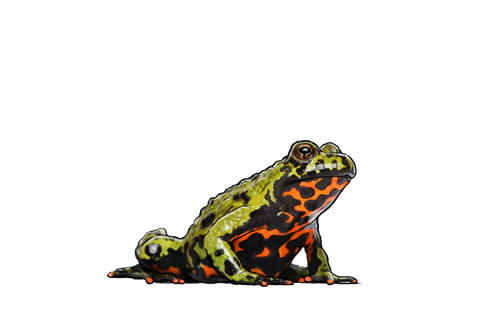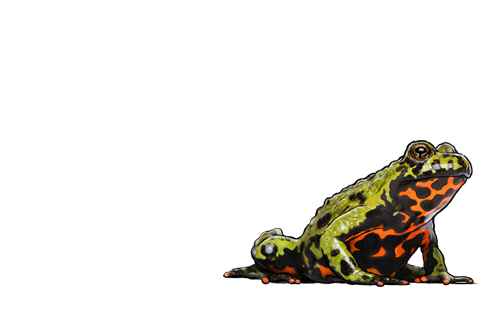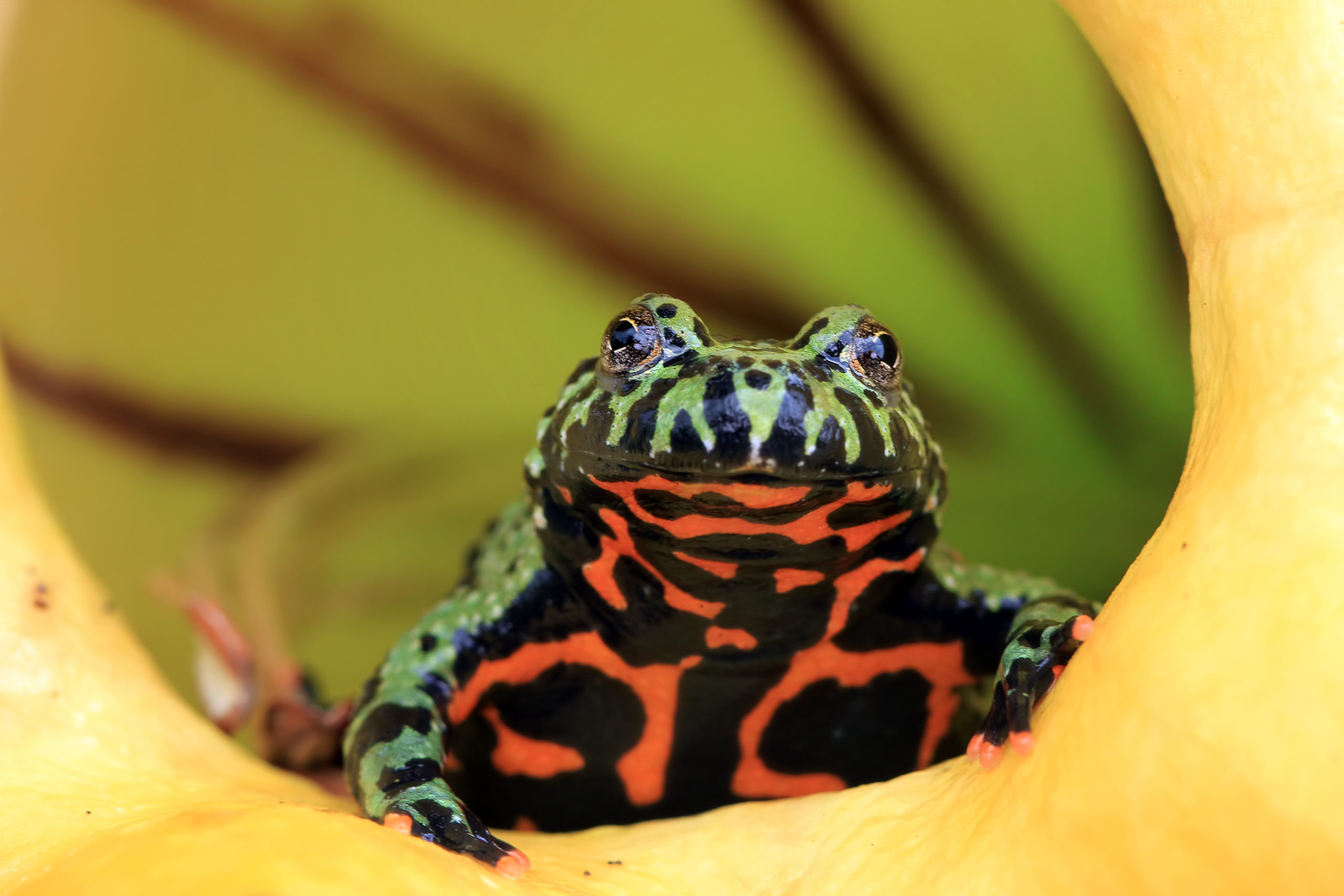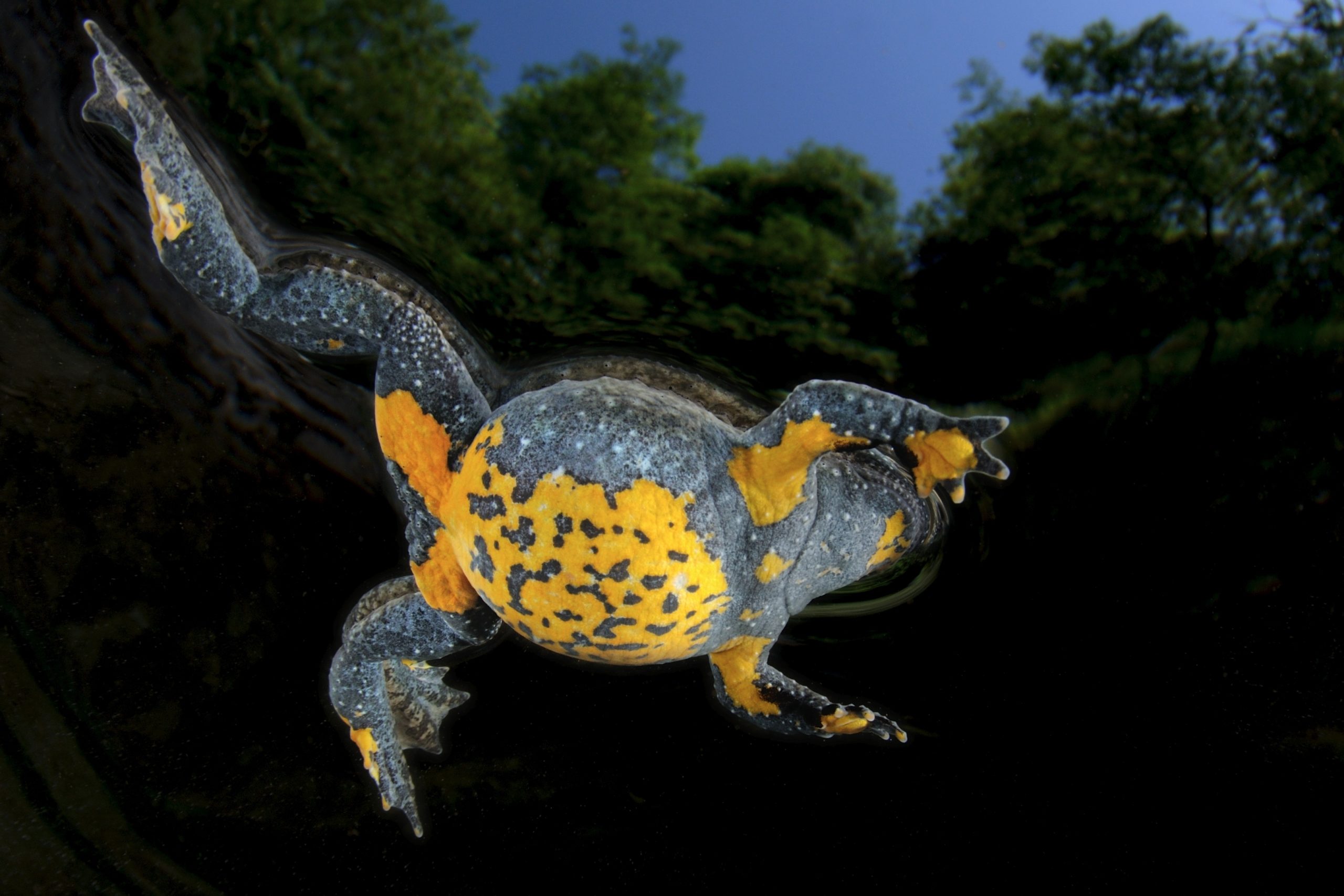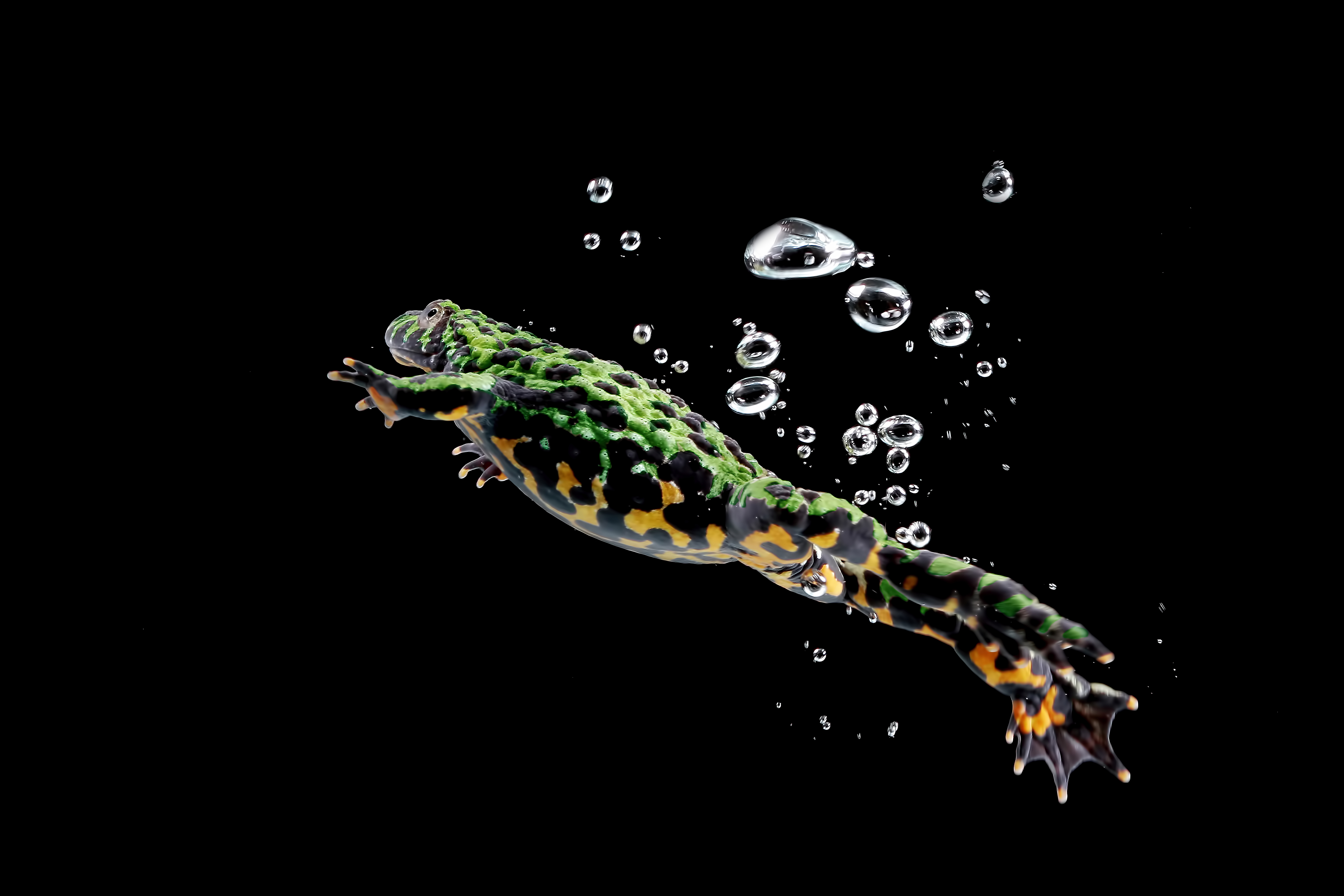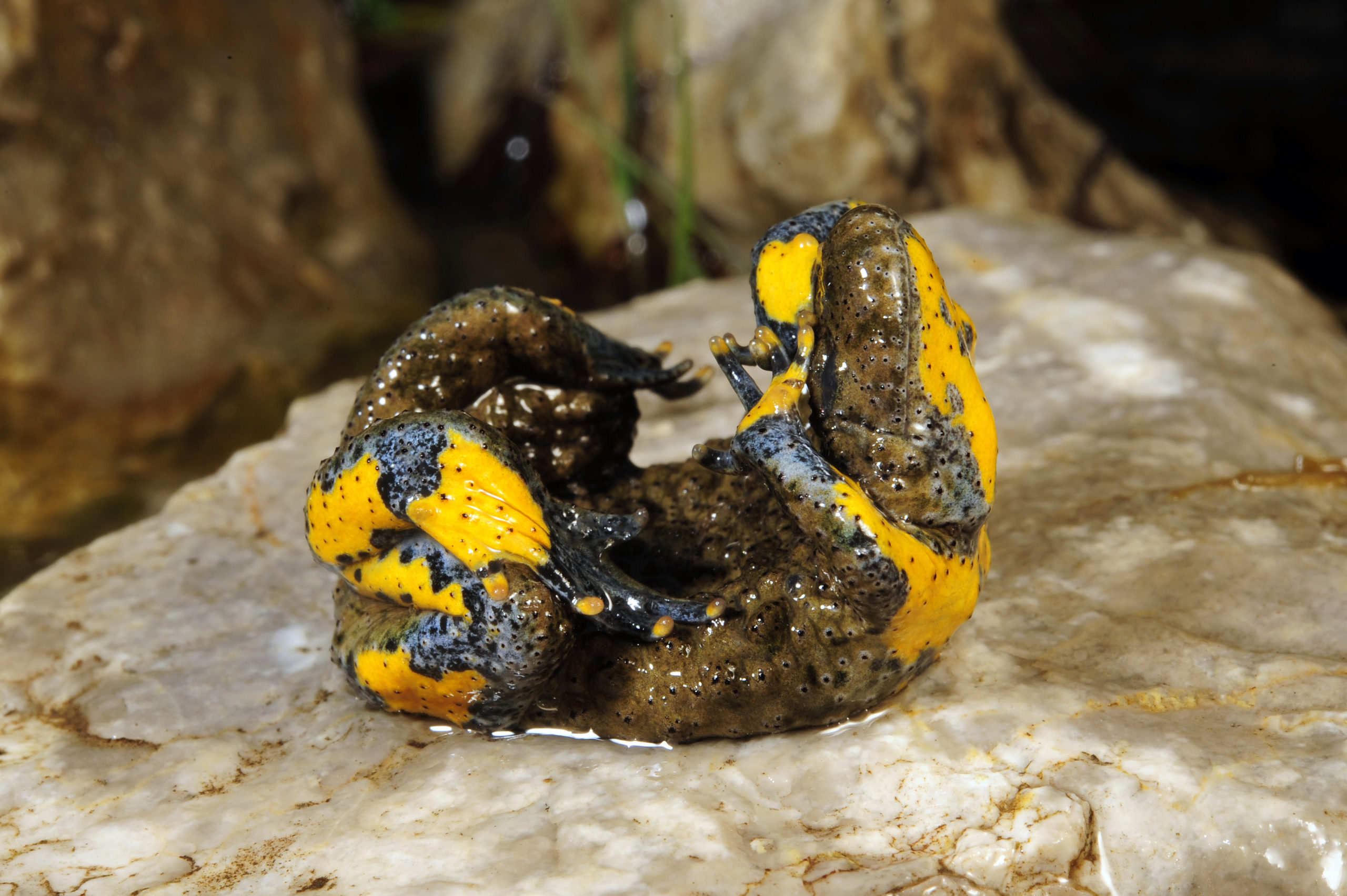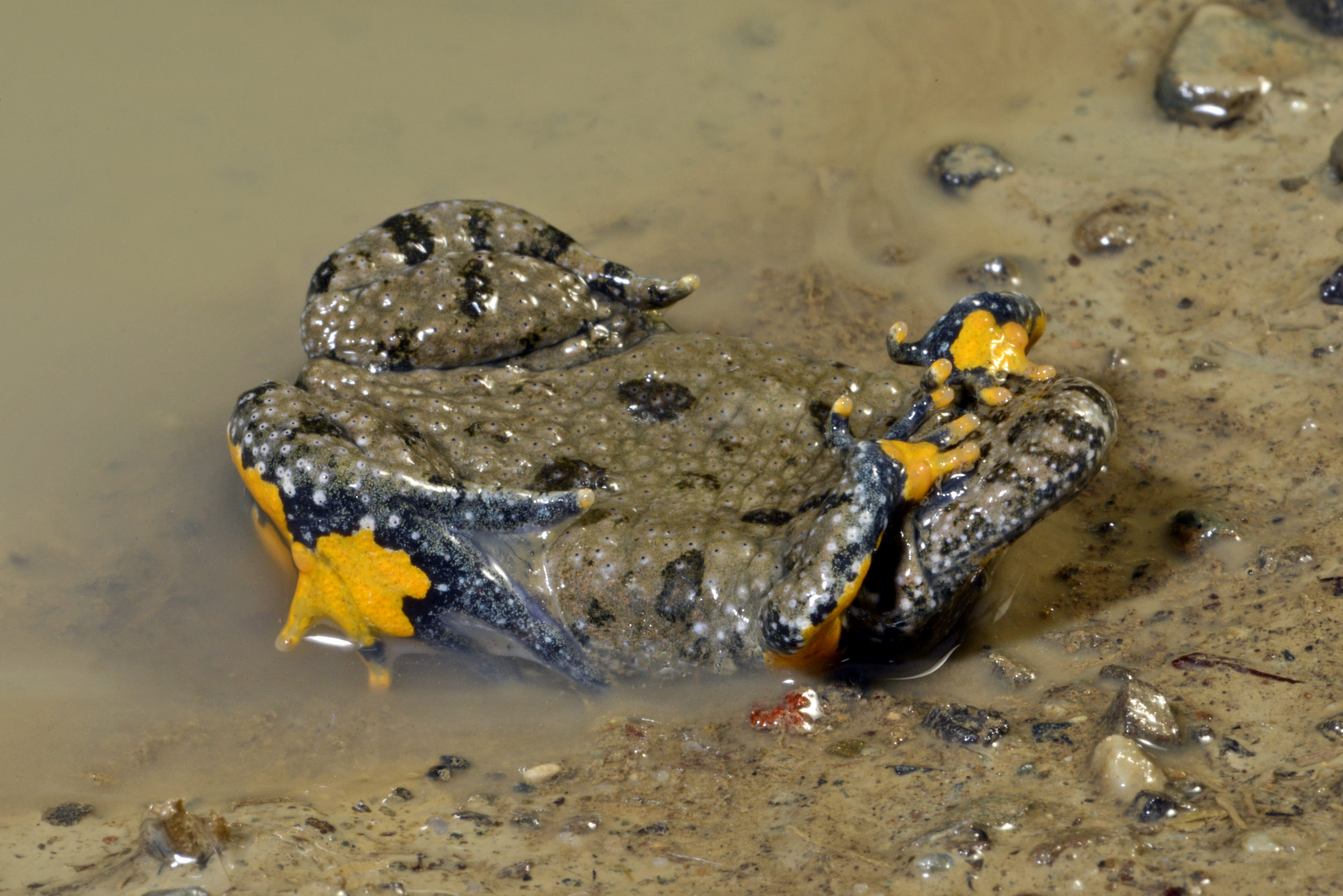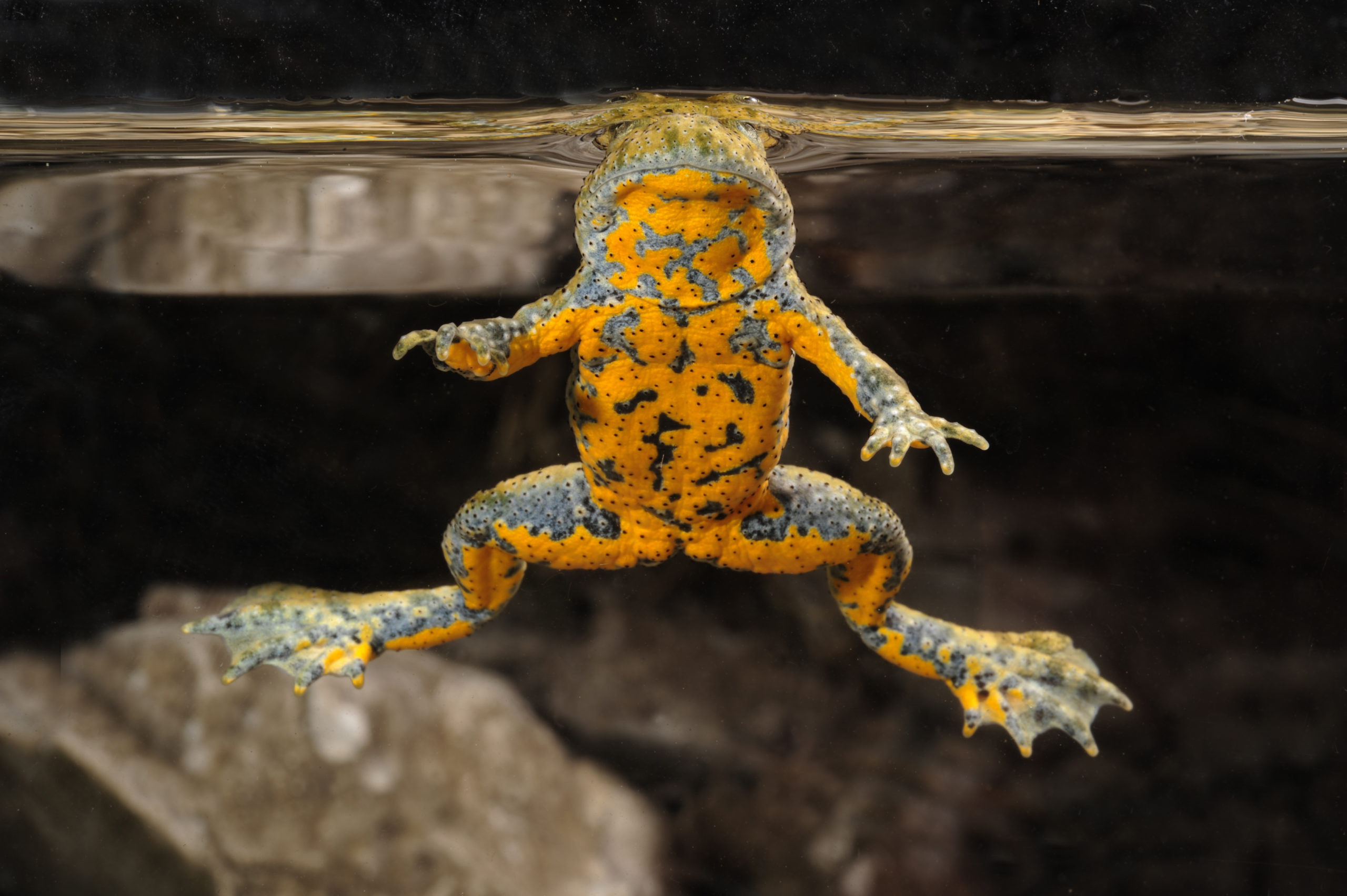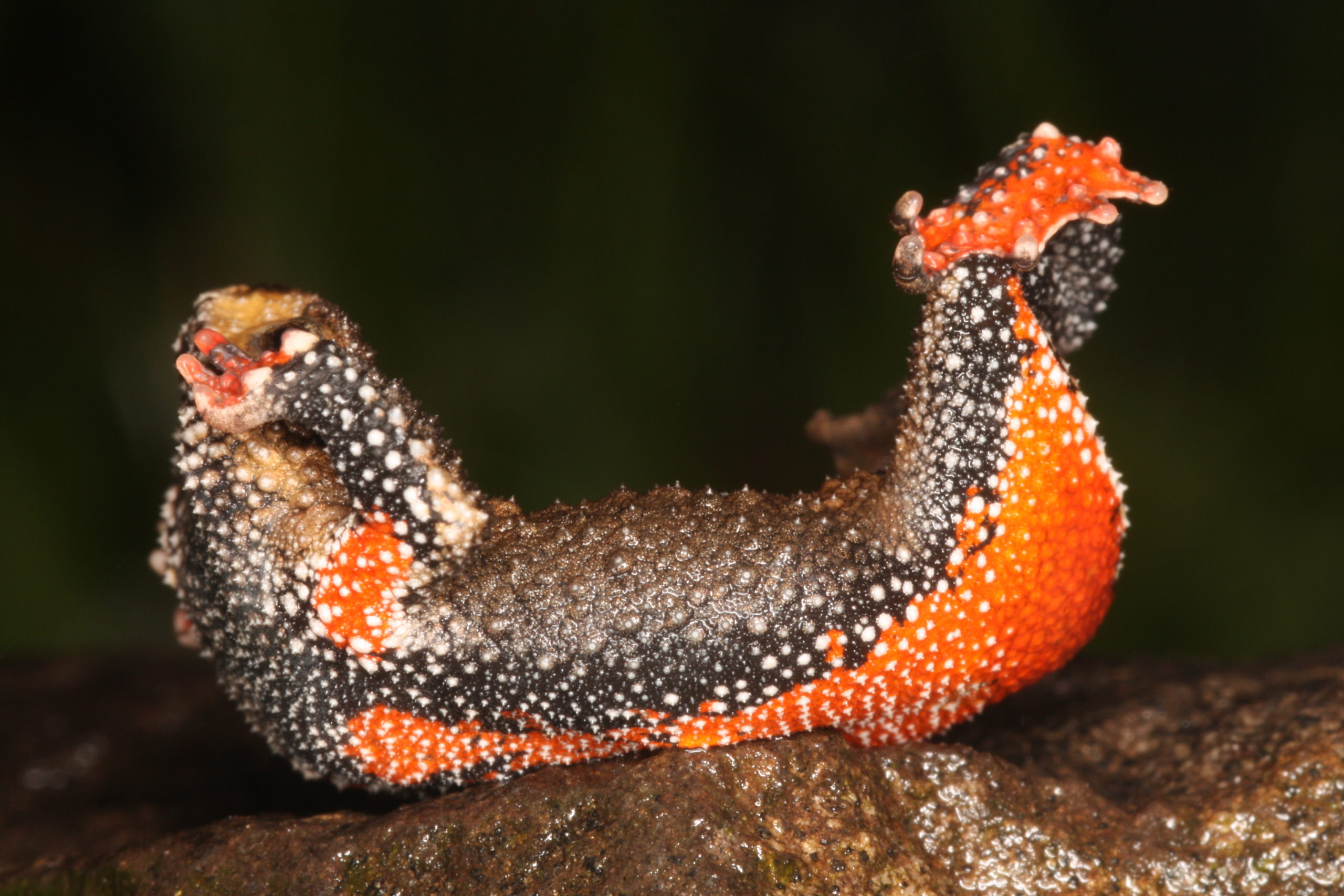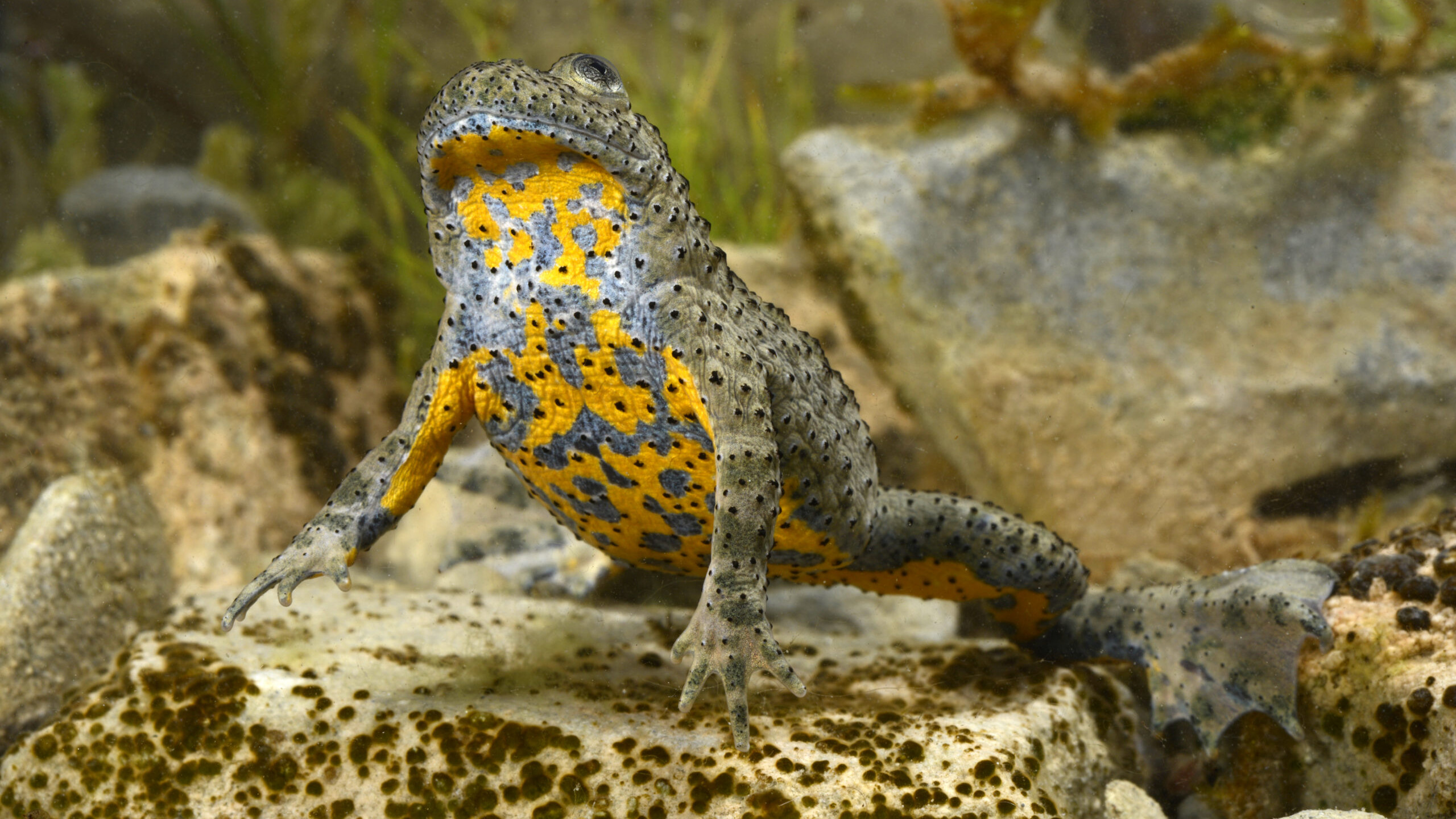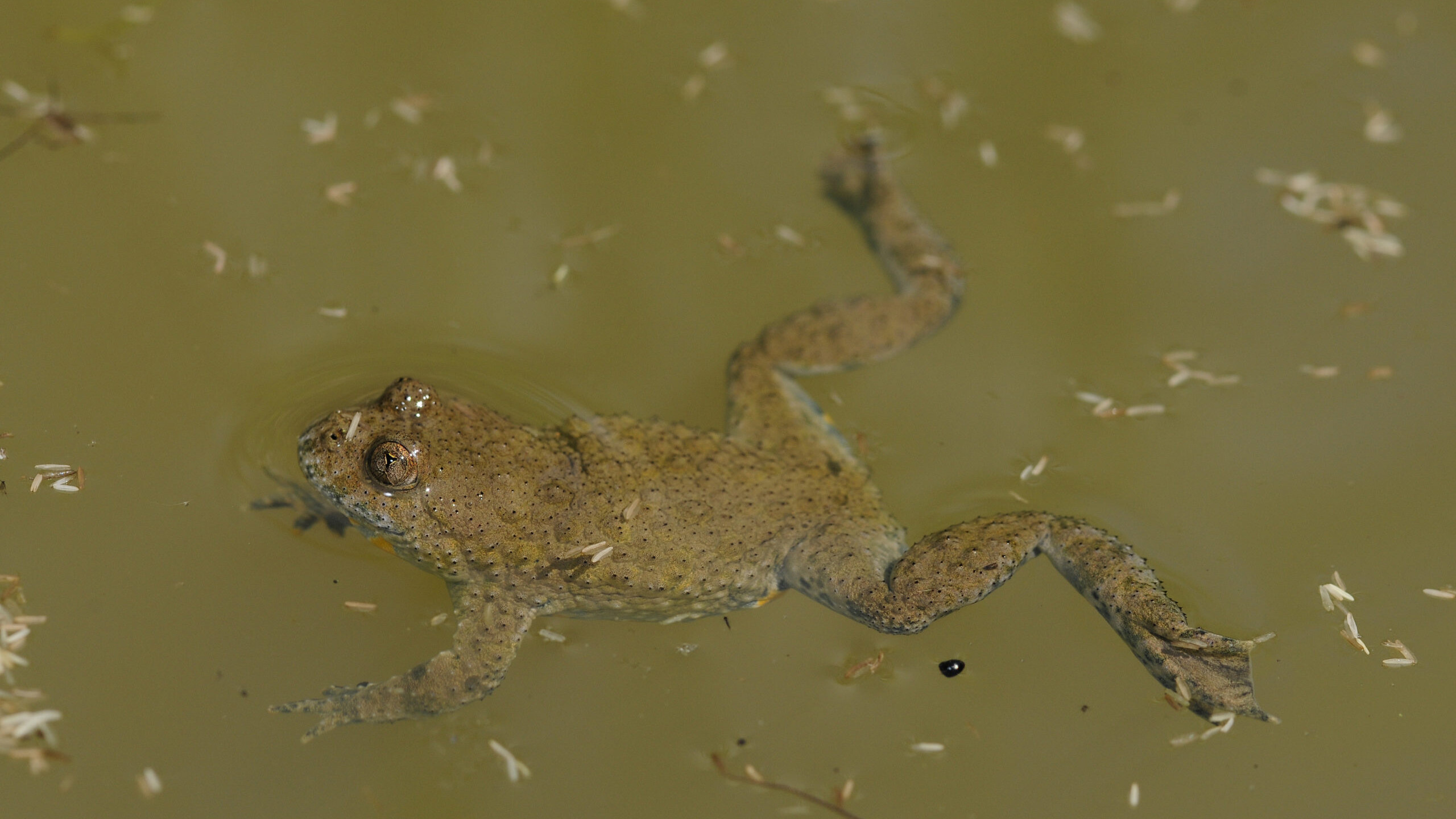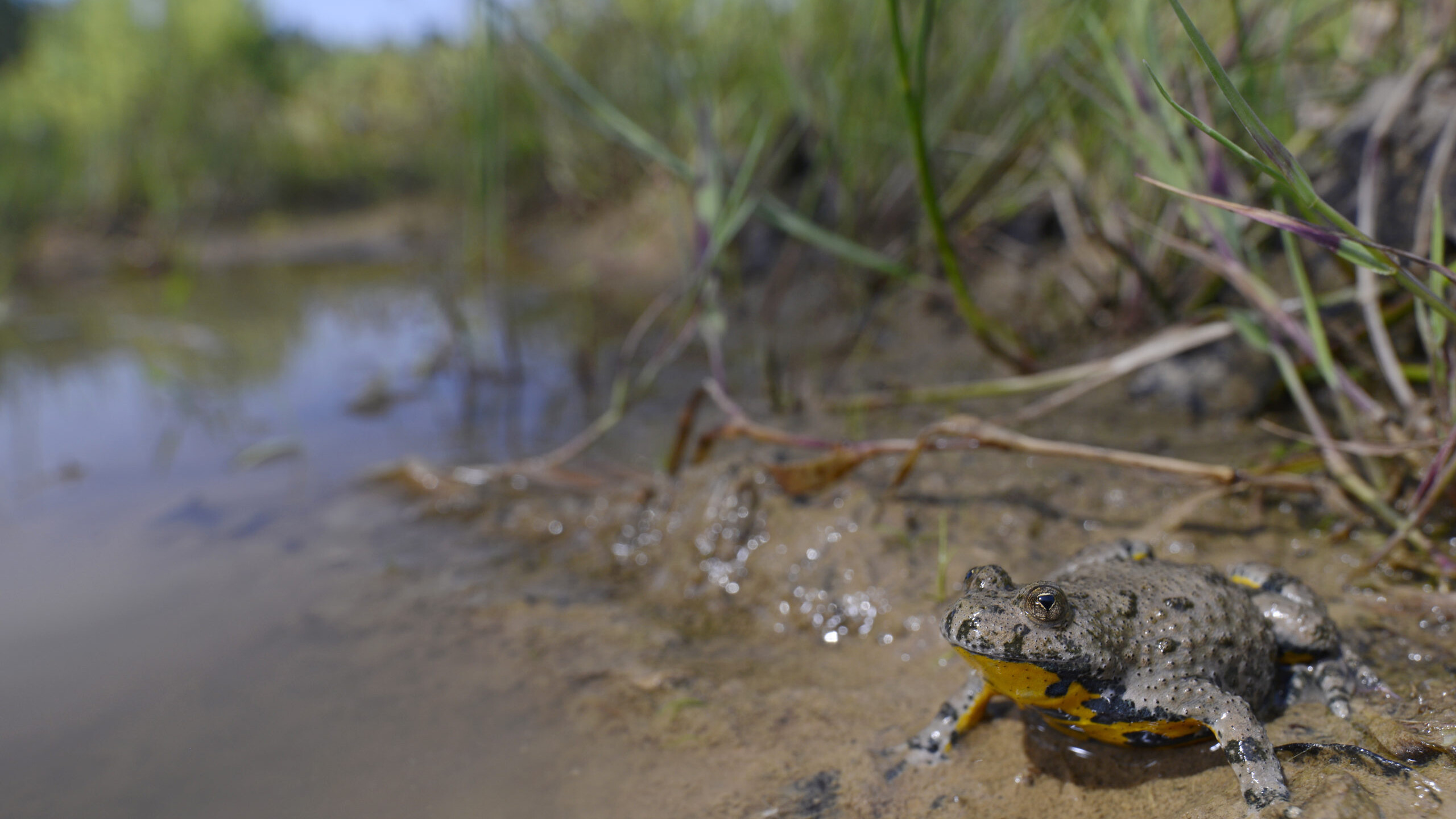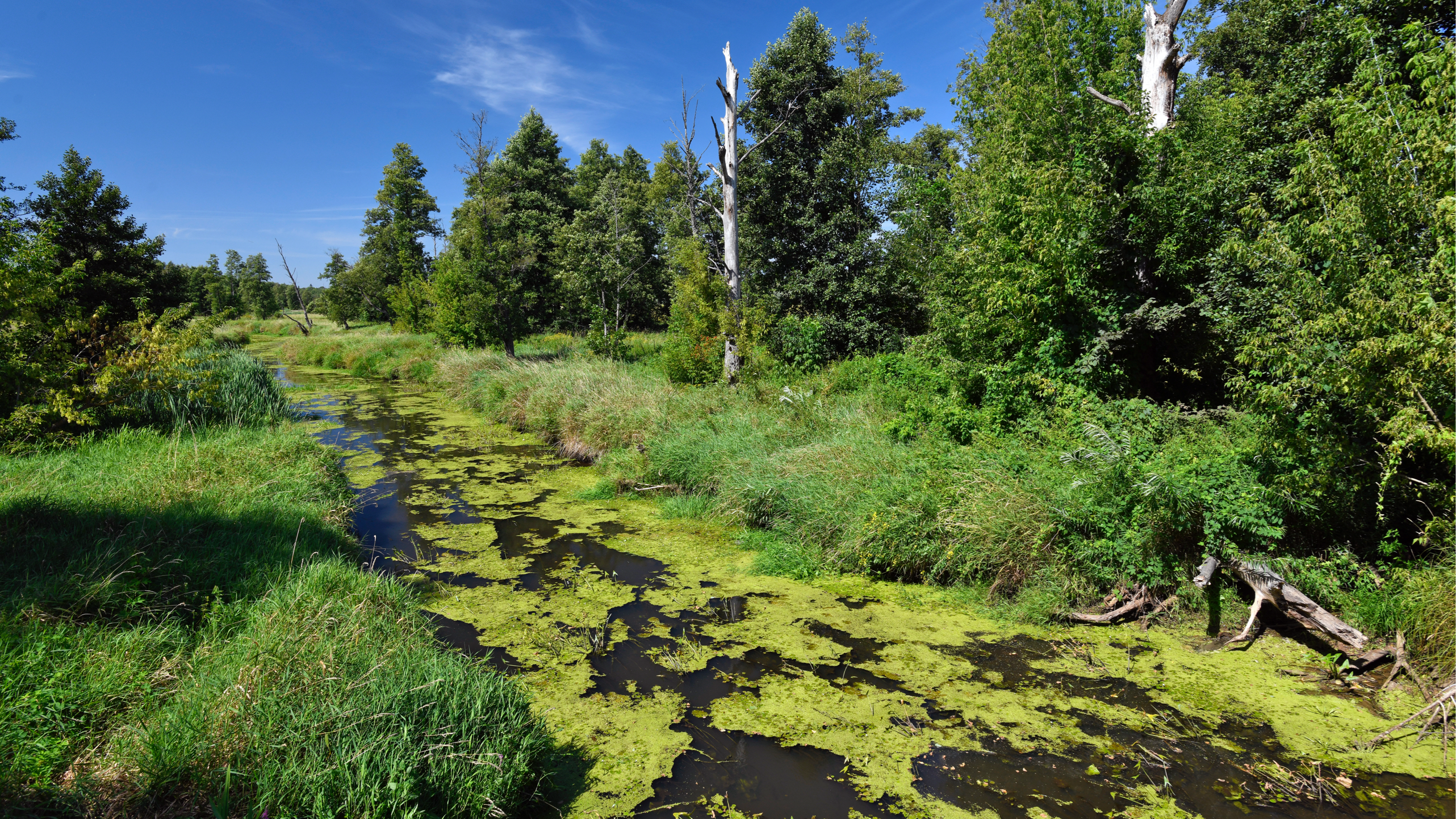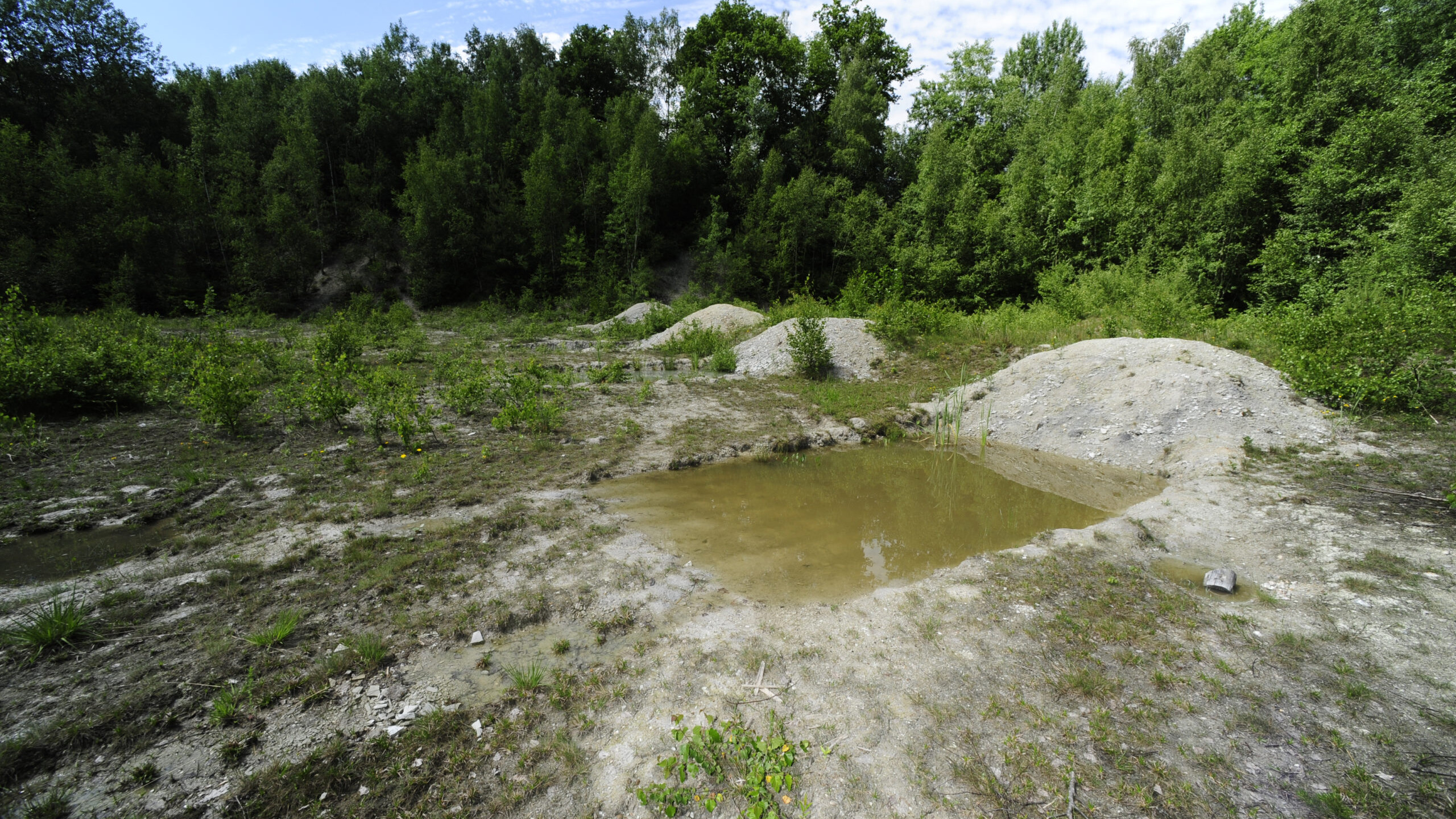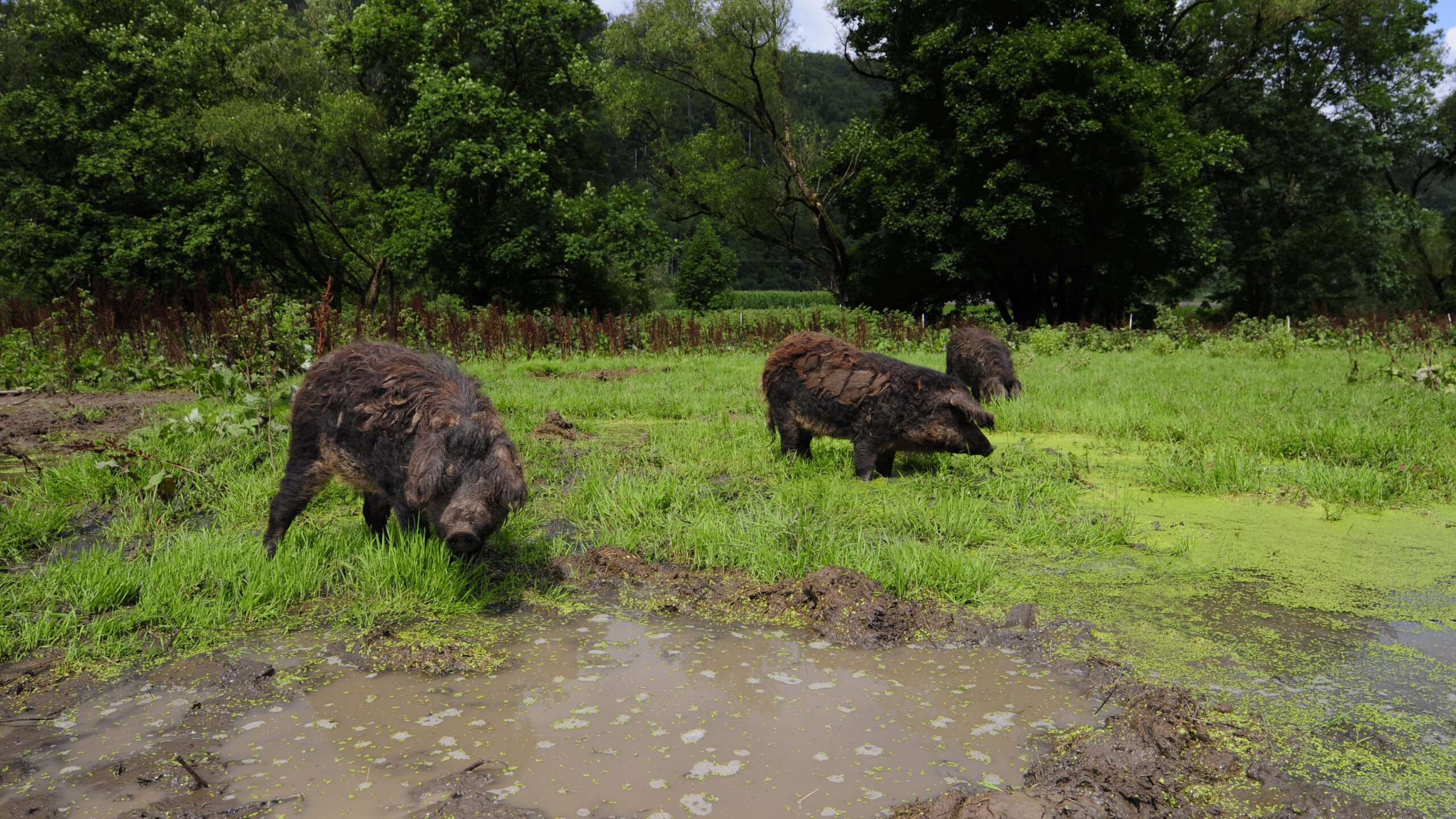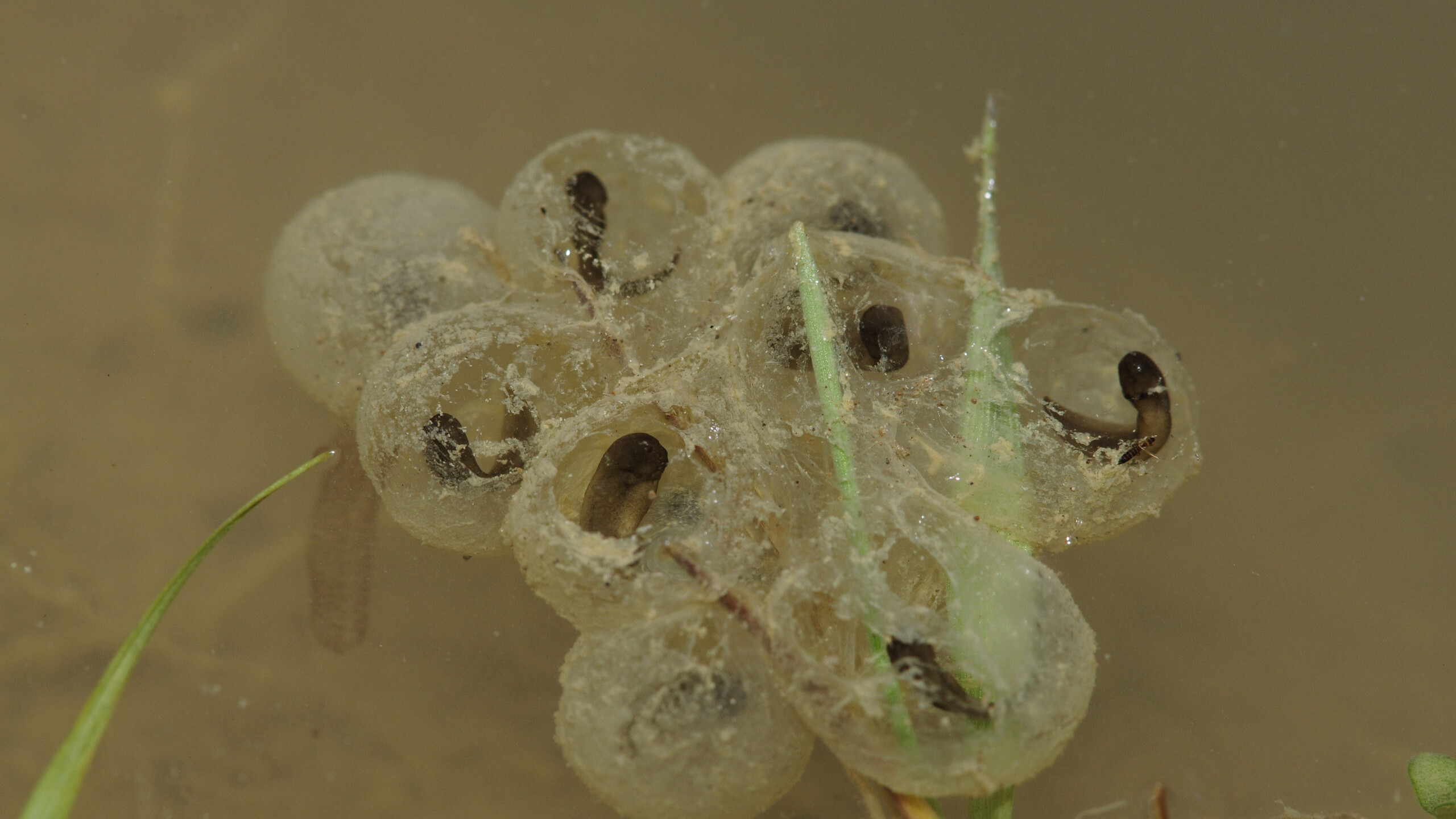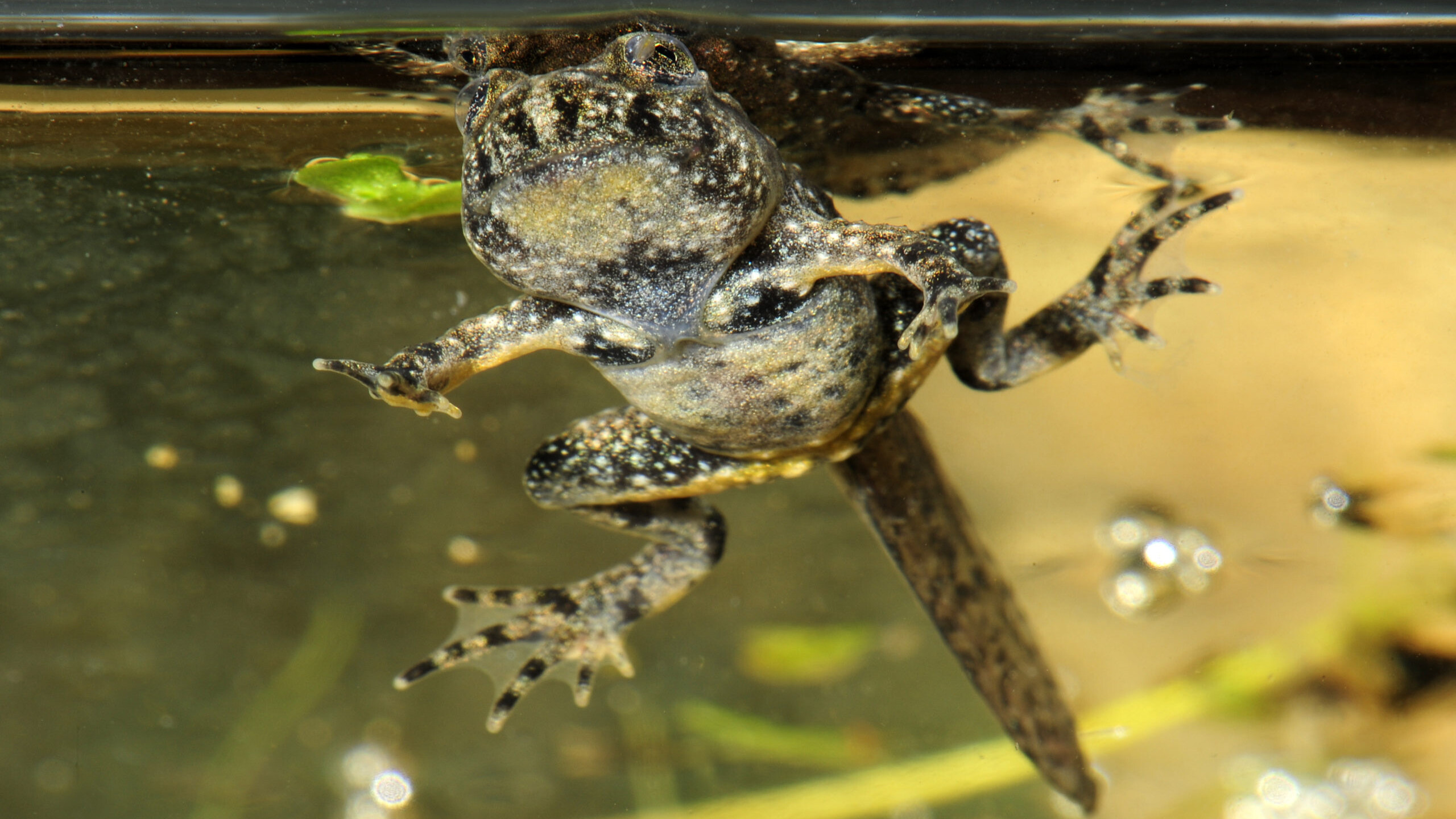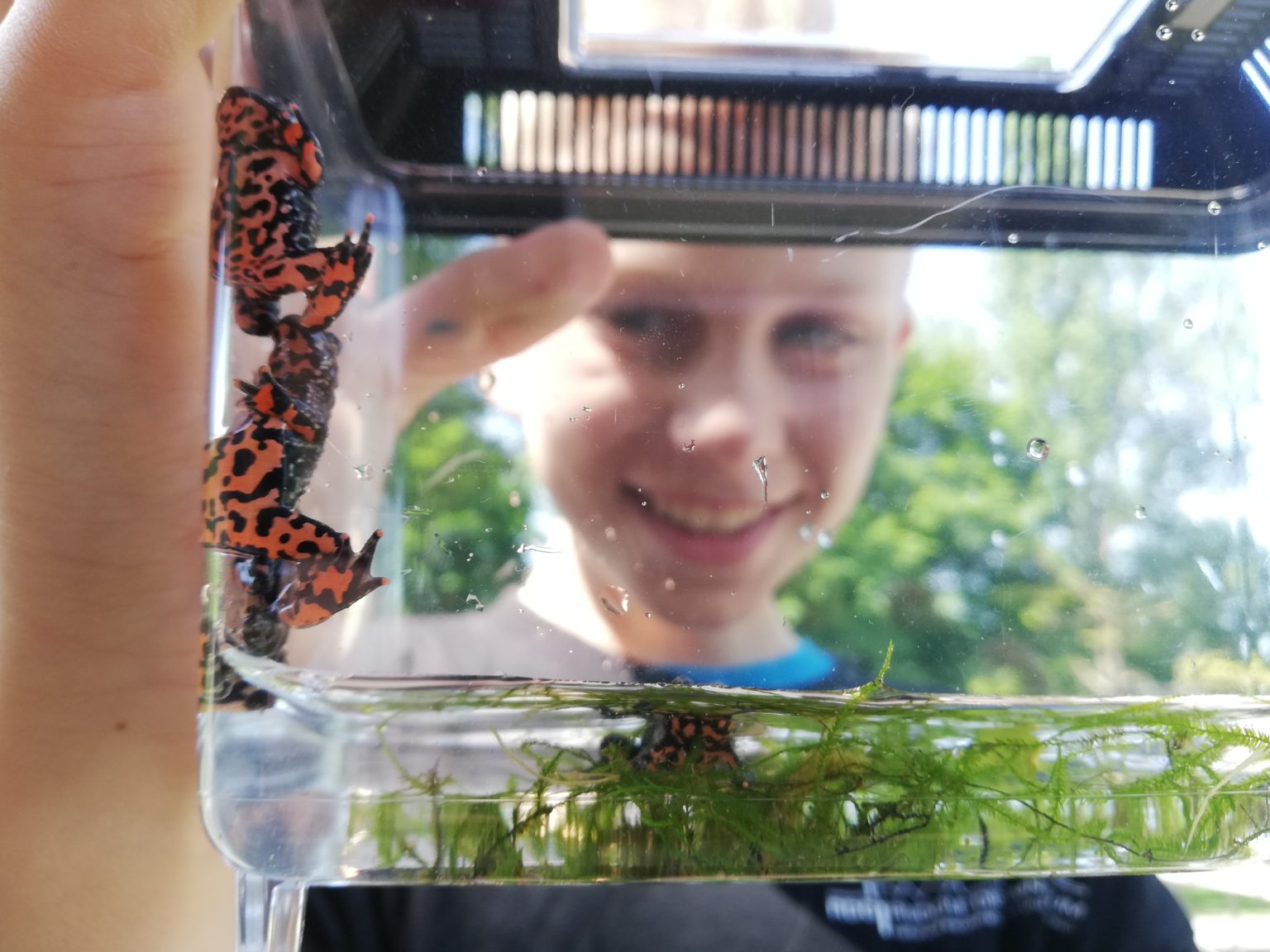Oriental fire-bellied toad
Bombina orientalis
Oriental fire-bellied toad
Bombina orientalis
CC goal
60 breeders
Status 11/2025
CC goal
225 animals
Status 11/2025
CC goal
60 breeders
Status 11/2025
CC goal
225 animals
Status 11/2025
When you compare someone to a “Unke” in Germany – which is the german word for the genus of fire-bellied toads – it’s not exactly a compliment. The verb “unken” in the vernacular means to look at the black, to be excessively pessimistic.
Quickly lively instead of ominously sad
Nobel Prize winner Günter Grass named one of his novels “Unkenrufe” (“Unken Calls”) because it deals with dead bodies and burials. Traditionally, the call of these amphibians is associated with mischief, death and sadness. The reason for this lies in the deep, far-reaching call of the fire-bellied toad (Bombina bombina), native to Central Europe, which sounds plaintive to human ears. The male toad is in a frenzy and wants to attract a mate for the purpose of procreating a new generation. Pure lust for life instead of a longing for death.
Unkenreflex – a specific defensive posture
Unique croaking
Toads have a unique selling point: they are the only frogs that call while inhaling. Therefore, in addition to the vocal sac, through which other frogs and toads emit their call to the world when they squeeze out air, the lungs themselves can also serve as a resonance chamber. Accordingly, a calling male toad looks like a bellows, with the sides inflating and collapsing again.
Locally endangered
Sympathetic amphibians for the home
Especially the Oriental fire bellied toad is perfectly suitable for keeping in aquaterrariums. It is therefore one of the few amphibian species that have been imported to Europe in larger numbers for the commercial pet trade for a long time. There would be nothing to say against it, because the charming animals are easy to keep, very active, show interesting behavior and are therefore likeable amphibians for home. They can be recommended to beginners without hesitation, because their needs are easy to meet. The species is also not threatened.
Homegrown organic fair trade toads instead of wild-caught and large-scale imports
Creating new Amphibian Keepers means creating species conservation capacity
But what is the Oriental fire-bellied toad doing at Citizen Conservation then? On the one hand, it is an almost perfect species for beginners and schools looking for attractive and at the same time low-maintenance animals to be able to make basic observations of amphibians, to create sympathy for this vulnerable group of animals and to learn basic terraristic knowledge. This is entirely in line with the CC philosophy: creating capacities for species conservation! For those who later want to keep highly endangered, difficult-to-care-for amphibian species for conservation breeding must first have learned how to handle these animals.
Mattis with offspring of the Oriental fire-bellied toad. The pupil from the Rudolf Diesel Gymnasium in Augsburg is taking part in the CC octopus project with his elective course in terraristics. © Markus Pfister
Disease prevention through “toads from regional cultivation”
More importantly, however: The chytrid fungi, which are extremely dangerous for our native amphibians, apparently originate from East Asia – as do the Oriental fire-bellied toads. It is therefore conceivable that new, more dangerous variants of the fungi are being imported with the toads. Especially since, at least in one individual case, the salamander-eating fungus Bsal has also been detected on Asian toads. And why take this risk, when Oriental fire-bellied toads can be bred very well in our country? Also from the point of view of animal welfare it is better to offer lovingly bred offspring from terrariums than imports from the Far East, which have had a long journey and various intermediate caging periods. Especially since the population of toads is also decreasing in East Asia. Although less due to capture for the pet market than due to the usual endangering factors such as habitat destruction by draining wetlands and environmental pollution, it is nevertheless quite unnecessary to take additional animals that can easily be bred here as well. Homegrown organic fair trade toads, so to speak, instead of wild-caught and large-scale imports. Therefore, CC wants to meet the justified demand of the pet trade for these attractive animals through own offspring or at least help to reduce the number of animals that are being imported.
For breeders
Basic information on biology and breeding
The toads are maintained in medium sized paludariums or aquaterrariums with a terrestrial part provided by cork pieces or stone structures. Several males and females can be kept together. Room temperature and simple basic lighting are sufficient. Breeding after cool overwintering. Rearing omnivorous tadpoles in the aquarium. Detailed breeding guidelines in english language for download will follow shortly.
